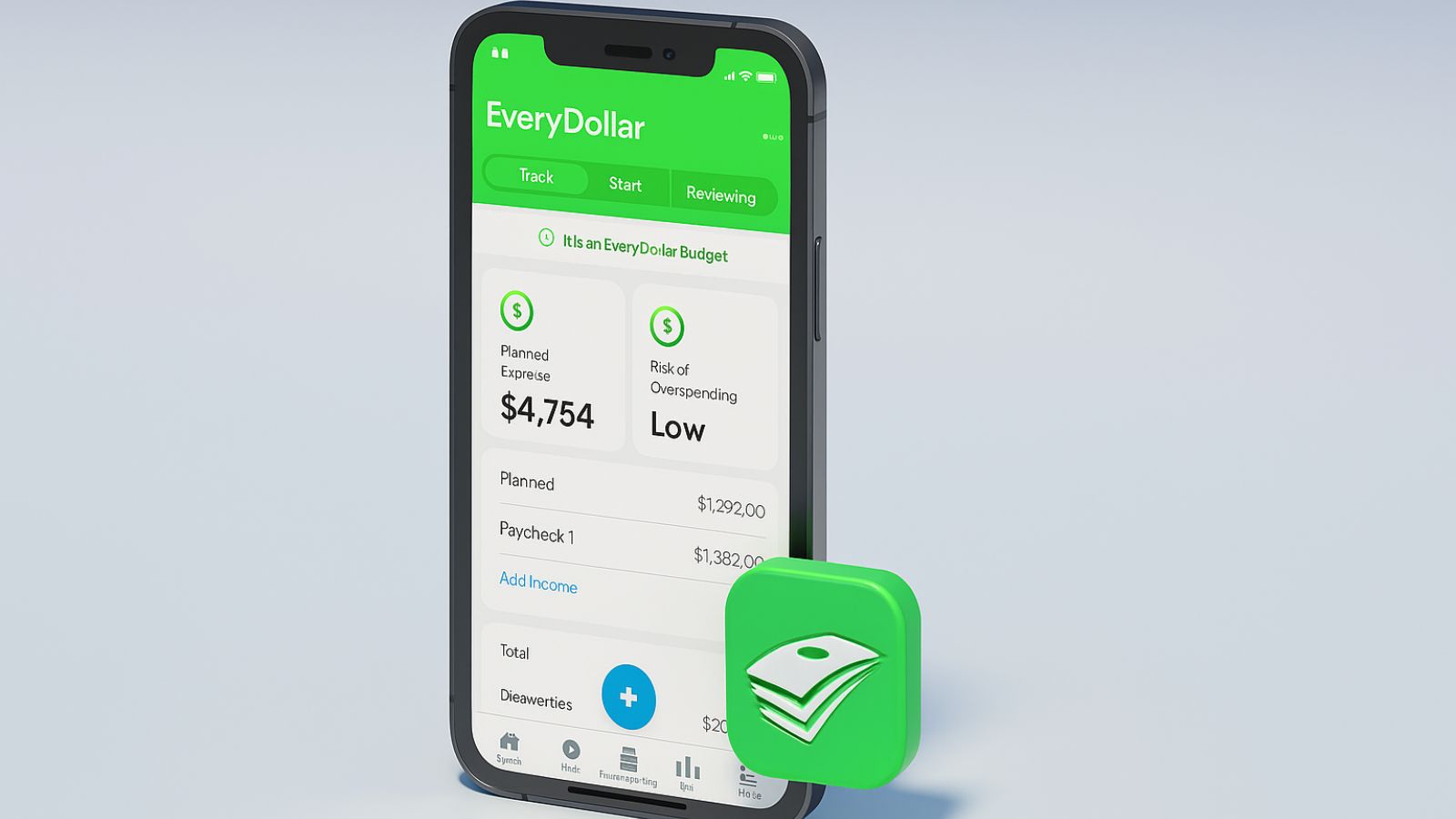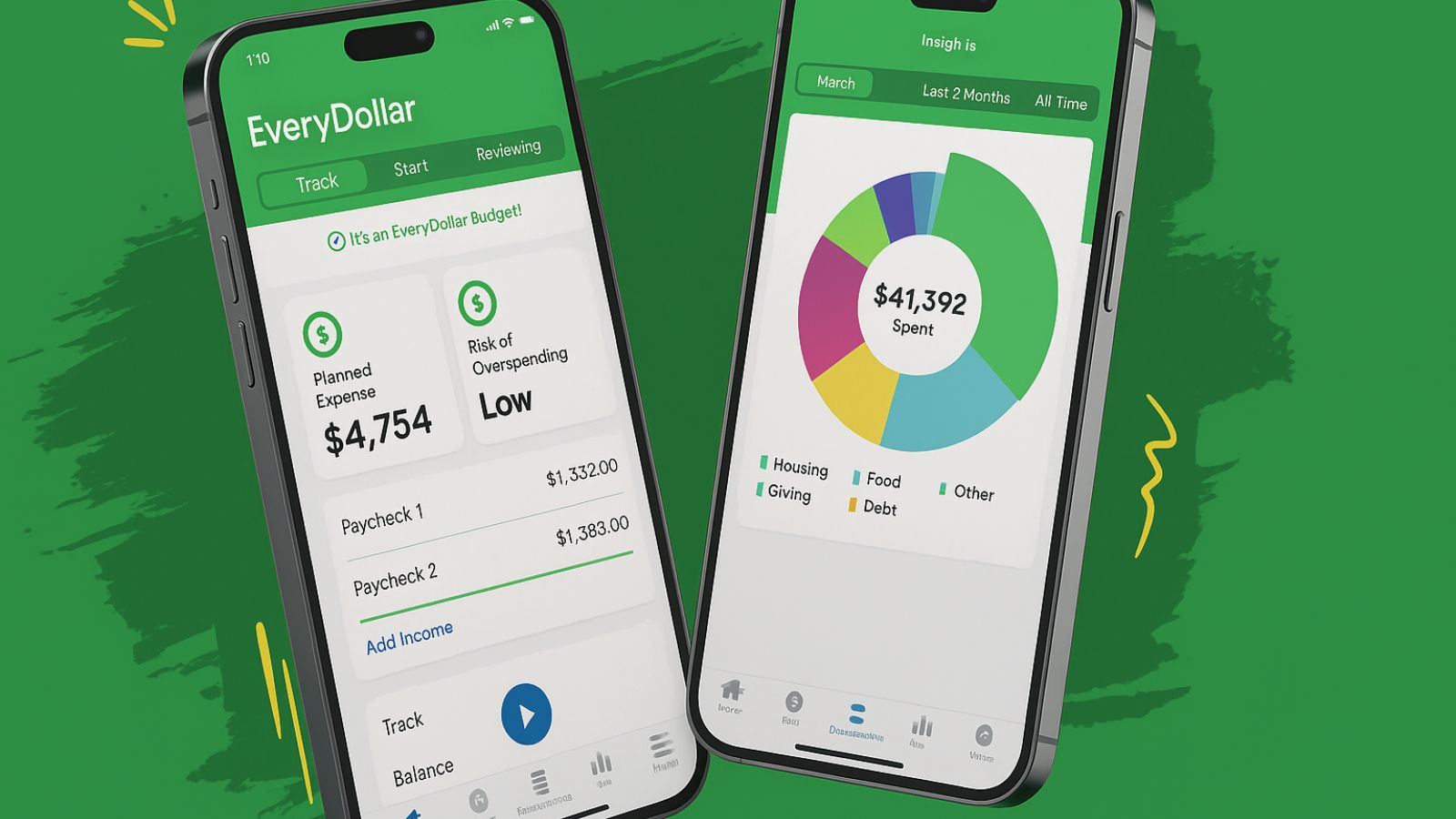Budgeting often feels like trying to juggle flaming torches while balancing on a unicycle. Most people know they need to keep track of their money, but the actual task of sitting down and planning where every dollar goes can feel like a chore that belongs somewhere between dental work and folding laundry. That’s where budget apps step in, promising to make the process easier, less painful, and maybe even a little enjoyable.
Dave Ramsey’s EveryDollar app is one of the most talked-about tools in this space. Created by the financial guru who built his reputation on no-nonsense money advice and his “baby steps” plan, the app is designed to help people take control of their finances using a simple method: zero-based budgeting. In other words, every single dollar you earn gets a job, whether it’s paying bills, buying groceries, or padding your savings account. The app has garnered a loyal following, but it has also drawn its fair share of critics.
So, what’s the real story? Is EveryDollar the financial lifesaver it claims to be, or is it another shiny piece of software that looks good on the surface but leaves you frustrated in the long run? Let’s break it down into the actual pros and cons, giving you a clearer picture before you decide whether to download it.
Pro: Simple, Straightforward Zero-Based Budgeting
One of EveryDollar’s biggest strengths is its clarity. Unlike some budgeting tools that resemble a giant financial dashboard crammed with pie charts, line graphs, and hidden features, this app simplifies budgeting down to the essentials. Zero-based budgeting might sound complicated, but it’s surprisingly easy to understand. You assign every single dollar you earn to a category, and by the end, your income minus expenses equals zero. It’s not about spending every penny; it’s about giving each dollar a purpose.
For someone new to managing money, this simplicity is refreshing. Many apps overwhelm users with bells and whistles, but EveryDollar sticks to the basics. Think of it as the budgeting equivalent of a pocket knife instead of a Swiss Army knife. It may not be a perfect solution, but it handles the essentials without confusing you.
There’s also something satisfying about watching your categories fill up. Assigning money to groceries, rent, or savings feels tangible. The app almost gamifies the process, making it feel less like a chore and more like a form of progress. For users who feel lost in the financial fog, this straightforward method provides a clear road map.
Con: The Free Version Requires Manual Entry
Here’s where things get tricky. The free version of the Everydollar app doesn’t connect to your bank account. That means you have to manually type in every single expense, from your rent payment down to that spontaneous $3 coffee. At first, this might feel manageable, even eye-opening, as it forces you to pay attention to your spending. But after a few weeks, it starts to feel like keeping a food diary during Thanksgiving dinner—time-consuming and not always sustainable.
Many other budgeting apps offer automatic syncing, so manually entering data can feel outdated. For a busy family juggling work, school, and errands, it’s easy to forget logging that grocery store run or online purchase. Before long, your budget may no longer reflect reality, making the entire exercise feel pointless.
That said, some people swear by manual entry. They argue it keeps them more engaged with their money and discourages mindless swiping of their debit card. If you’re the type who needs to see the numbers to stay accountable literally, the manual system might actually help. But for most people in today’s fast-paced lifestyle, the lack of automatic syncing feels like a significant drawback.
Pro: Integration With the Ramsey Baby Steps
One feature that sets EveryDollar apart from other apps is its integration with Dave Ramsey’s renowned Baby Steps plan. The app isn’t just a standalone budgeting tool; it’s a companion piece to his overall financial philosophy. For fans of his radio show, books, or Financial Peace University classes, this app feels like a natural extension.
The Baby Steps, which include saving $1,000 for emergencies, paying off debt using the snowball method, and gradually building wealth, are built into the app’s structure. That means if you’re already following Ramsey’s advice, the app gives you an organized, step-by-step digital home for your progress. This alignment makes it easier to stay motivated, especially if you’re the type who thrives on checking boxes and celebrating milestones.
Even for those who aren’t die-hard Ramsey followers, the Baby Steps framework can be a valuable resource. It takes the guesswork out of what to do with your money once you’ve built a budget. Instead of wondering whether you should prioritize paying off a credit card or building savings, the app nudges you toward a structured plan. For individuals who want not just budgeting but a comprehensive financial strategy, this built-in guidance can be a significant advantage.
Con: Subscription Costs Add Up
Here’s the elephant in the room: EveryDollar isn’t free if you want the whole experience—the premium version, which includes automatic bank syncing and additional features, is available at a subscription cost. While the price isn’t outrageous compared to some competitors, it can feel ironic to spend money on an app designed to help you save money.
For budget-conscious households—the very people who need this tool—adding yet another monthly fee can feel like a burden. Although it may not break the bank, the psychological hurdle is a genuine concern. If you’re trying to cut unnecessary expenses, paying for a budgeting app can seem counterproductive.
Of course, some users argue that the cost is worth it. If the app helps you avoid overdraft fees, pay off debt faster, or save for emergencies, the subscription could pay for itself many times over. Still, the price tag remains a sticking point, particularly when free alternatives like Mint or YNAB’s trial period are available.
Pro: User-Friendly Design
Suppose you’ve ever tried to use a clunky budgeting spreadsheet or an app that looks like it was designed during the dial-up internet era. In that case, you’ll appreciate EveryDollar’s clean, modern design. The interface is intuitive, with a colorful layout that makes it easy to see where your money is going. Categories are neatly organized, and adding expenses feels quick and painless.
This user-friendliness makes the app accessible to people who aren’t tech-savvy. Older users who may feel intimidated by financial apps often find EveryDollar less overwhelming. The clean visuals and straightforward process reduce the intimidation factor, helping users focus on the budgeting itself rather than struggling with the software.
Additionally, the mobile app syncs with the desktop version, so you can update your budget on the go and then review it at home. This flexibility makes it practical for couples as well. If one spouse buys groceries while the other pays a bill, both can update the budget without waiting until the end of the week. In a household where communication about money is already tough, this feature can be a relationship saver.
Con: Limited Features Compared to Competitors
EveryDollar’s simplicity is both its strength and its weakness. While the streamlined design makes it easy to use, it also means you won’t find some of the additional features offered by other apps. For example, you won’t get detailed financial forecasting, investment tracking, or side-by-side comparisons of monthly spending trends.
Some users find this lack of depth frustrating, especially once they’ve mastered the basics of budgeting. Imagine finally gaining control of your spending only to realize the app won’t keep pace with you as your finances become more complex. If you’re someone who enjoys digging into reports and analyzing your financial habits in detail, you may find EveryDollar too bare-bones.
Other apps, such as YNAB or Mint, offer a more comprehensive view of your entire financial picture. They may not have the same connection to Ramsey’s Baby Steps, but they do provide more flexibility and customization. For those who outgrow EveryDollar’s simplicity, switching to a different app becomes almost inevitable, which can feel like starting over from scratch.
Conclusion
EveryDollar is like that dependable friend who always shows up on time: reliable, easy to understand, and focused on the basics. It shines for beginners who need a straightforward way to start budgeting, especially if they’re following Dave Ramsey’s Baby Steps. Its simplicity, clear design, and structured guidance make it a solid choice for many households trying to get their finances under control.
But it’s not without flaws. The manual entry required in the free version can be tedious, the subscription cost may deter some users, and the lack of advanced features limits its appeal for those who want more than just basic budgeting. In other words, it’s not the perfect fit for everyone.
If you’re starting your financial journey and want an easy-to-use tool that keeps you accountable, EveryDollar could be precisely what you need. But if you’re looking for a more comprehensive system that integrates every corner of your financial life, you may want to explore alternatives. Ultimately, the best budgeting app is the one you’ll actually stick with, and for many, EveryDollar offers just enough structure and simplicity to make the habit stick.


